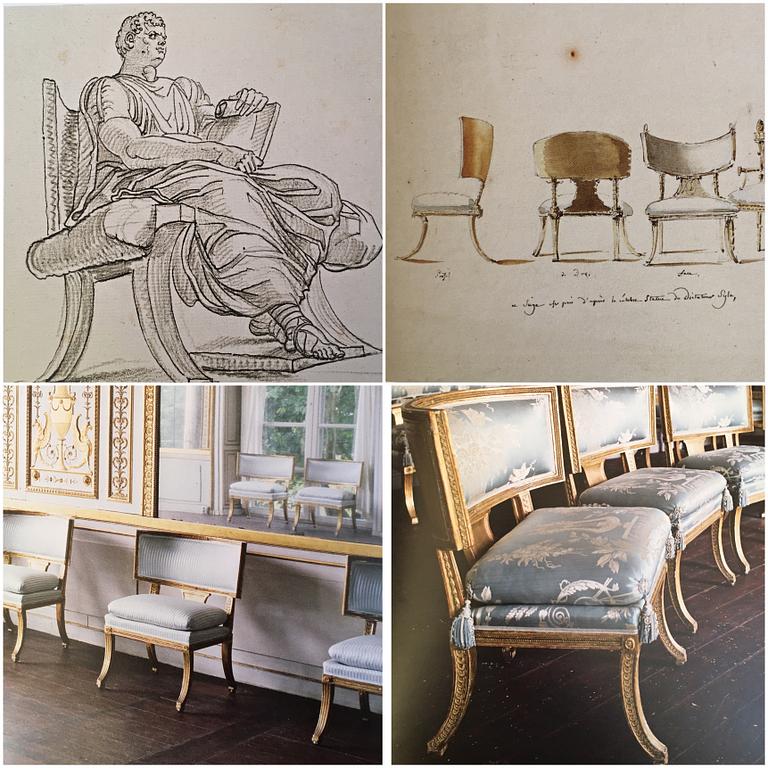A pair of Swedish late Gustavian 1790's klismos chairs.
Gilt and bronzed.
Back seat rails probably later. Reinforcements. Wear. Repairs. Décor damages.
Literature
Haga, Ett kungligt kulturarv, Votum förlag, 2009, Stina Odlinder Haubo, Sullastolen - i nymodigaste romerska facon, page 190-191.
More information
Louis Masreliez designed the so-called Sullastool for Gustav III's pavilion at Haga around 1790. Since the late 1780s, the Gustavian interior and furniture style had transformed into a stricter antique design with the ambition to more stylishly mimic antique furniture. The original model was the Greek antique chair, the so-called Klismos chair, with strong curved back and bent legs, depicted on Greek vases and sculpture reliefs. The Romans continued to manufacture the chair and Louis Masreliez was able to study sculptures and reliefs in Rom with statesmen sitting in Klismos chairs. One of these sculptures represented Sulla (138 BC-78 BC), whose name Louis Masreliez referred to under his drawings for such chairs for Haga. In this way, the chair was called Sullastol in Sweden. The model had already been reinvented by the French in the 1780s and it is likely that Gustav III and Masreliez had been inspired by the French chairman Georges Jacobs Klismos chairs. The Sullastools at Gustav III's Haga were manufactured by Erik Öhrmark, who wrote in his 1791 invoice "Manufactured delivered 16 chairs in the most modern style”. In another bill he refers to the chairs with the words in "Romanic style".
The Sullastol's powerful and classical design became popular again in the 1920s and inspired Josef Frank to his chair model "300" from 1925 and Axel Einar Hjorth's chair "Caesar" from 1928.































































